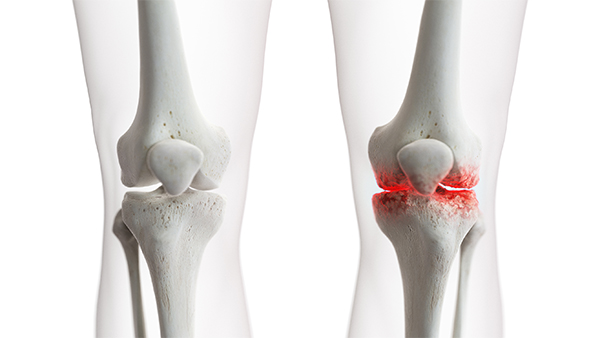
Knee Surgical Options
Arthroscopy
Osteotomy
An osteotomy is indicated if your limb has underlying deformity which is causing increased stress or arthritis in a certain part of the joint. You may notice that your leg is “bow legged” or “knock knee”. An osteotomy involves cutting the bone around the joint and then realigning the bone to equalise the pressure within the joint.
Total Knee Replacement
A knee replacement or knee arthroplasty is done to treat damaged or worn cartilage in the knee. This can be due to various forms of arthritis, previous trauma or injury to the knee or avascular necrosis.
Symptoms which you may experience are pain around the knee, loss of function and/or ability to perform normal daily activities or hobbies/sports, instability and loss of range of motion.
Complete Knee Replacement Patient Guide
Partial Knee Replacement
Depending on how badly affected the knee is at the time of surgery, there remains the option of either doing a partial knee replacement where only the damaged portion of the knee is replaced, or a total knee replacement where all compartments are replaced. The postoperative rehabilitation is critical in knee replacements to ensure that good range of motion is achieved and the knee does not become stiff.
Anterior Cruciate Ligament Reconstruction
Knee arthroscopy and meniscus repair
When it comes to meniscus repair, arthroscopy provides a precise approach to treat tears and injuries that can cause pain, swelling, and reduced mobility. During the procedure, small incisions are made, enabling the insertion of a camera and specialized instruments to access and repair the meniscus. This technique not only minimizes trauma to surrounding tissues but also promotes faster recovery times and less postoperative pain compared to traditional open surgery. By utilizing arthroscopy for meniscus repair, Dr MA Manjra ensures that patients can return to their daily activities and sports with improved functionality and reduced risk of long-term complications. Whether it’s through trimming damaged tissue or suturing tears, knee arthroscopy offers a tailored treatment option to restore joint health and enhance quality of life for those suffering from knee injuries.
Bilateral knee osteoarthritis
The previous x-rays demonstrate the pre- and postoperative x-rays of a patient with severe bilateral knee osteoarthritis. The patient presented with severe pain, loss of function and deformity. In this specific case, the right knee is turned inward or “knock knee” and the left knee is turned outward or “bow legged”, resulting in what is described as a “windswept deformity”.
The patient was treated with bilateral staged total knee arthroplasty (replacement). The postoperative x-rays demonstrate the powerful ability of a total knee arthroplasty to correct even severe deformity and restore alignment.
The patient achieved relief of pain and restoration of independent function.
